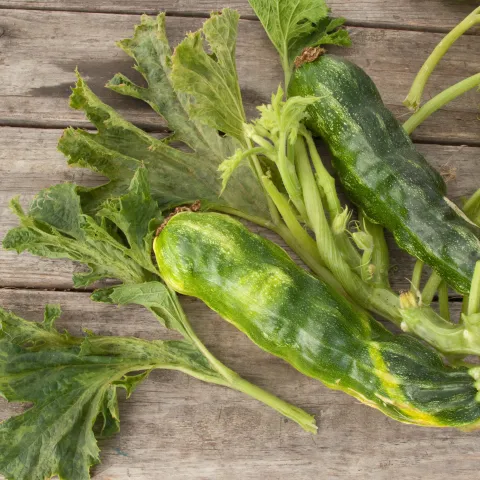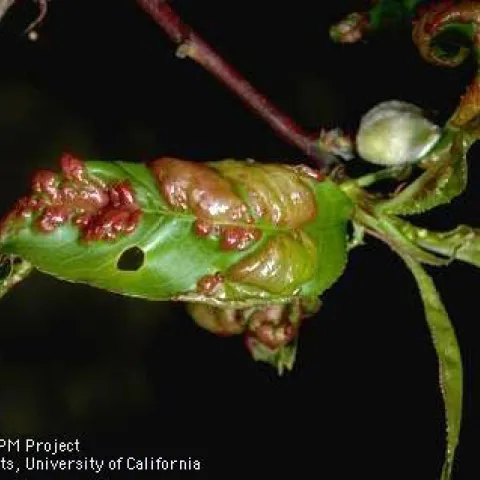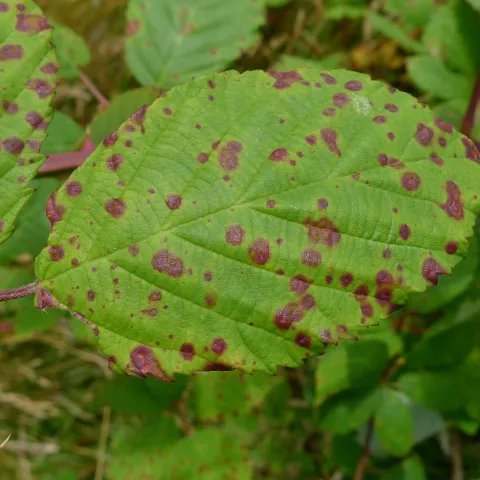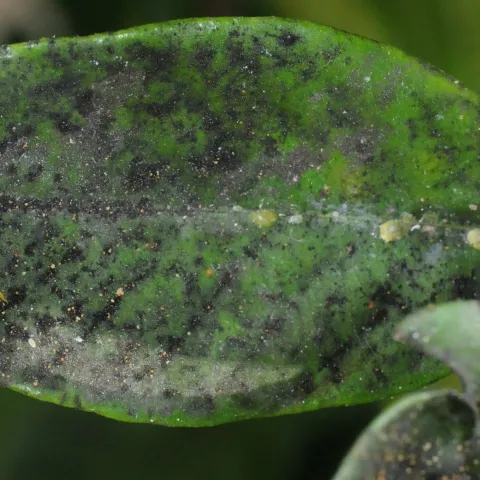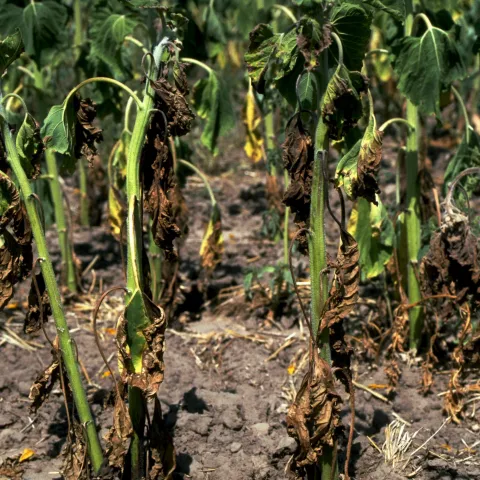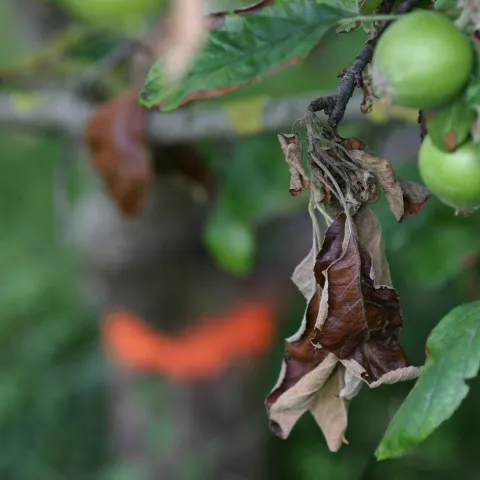Disease – bacteria, fungi, viruses, and phytoplasmas
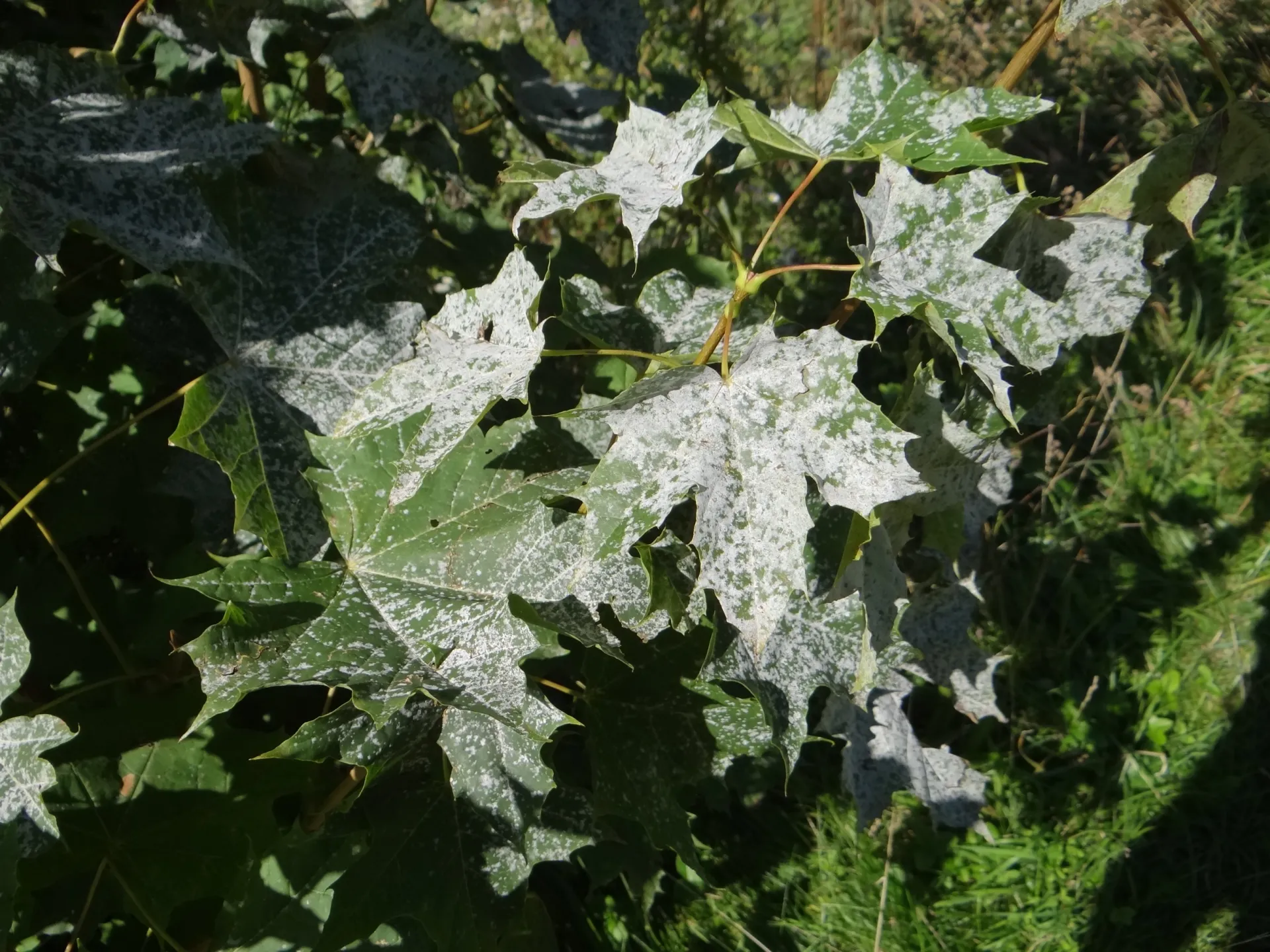
A plant disease is a malfunction in a plant in response to an infectious agent or pathogen, most typically a bacterium, fungus, virus, or nematode. They cause a wide range of symptoms that can affect the plant's ability to grow properly, reproduce and may reduce yields. Plant diseases are the result of three factors - a susceptible host plant, a pathogen, and environmental conditions that are favorable for infection and disease development. Collectively, these three factors are known as the “Disease Triangle.” If any one of these is not present, disease will not develop.
Bacteria
• Microscopic, single-celled organisms with no organized nucleus
• Some are plant pathogens; the vast majority are harmless or beneficial
• Example: Fire blight
Fungi
• Living body is a mycelium made of a web of tiny filaments called hyphae
• Mycelium is usually hidden in the soil, in wood, or another food source
• Fruiting bodies (reproductive portion) may be seen above ground, are commonly called mushrooms
• Responsible for decomposition of organic matter
• Some are plant pathogens; the vast majority are harmless or beneficial
• Examples: Peach leaf curl, rust
Viruses
• Microscopic particles of either DNA or RNA wrapped in a protein coat
• Enter plant cells and multiply by using the plant’s own enzymes to manufacture more virus particles
• Infections are incurable and systemic - the virus occurs throughout the plant
• Example: Mosaic virus
Phytoplasmas
• Unusual group of bacteria that lack cell walls
> GARDEN PESTS:
> Invertebrates
> Vertebrates


